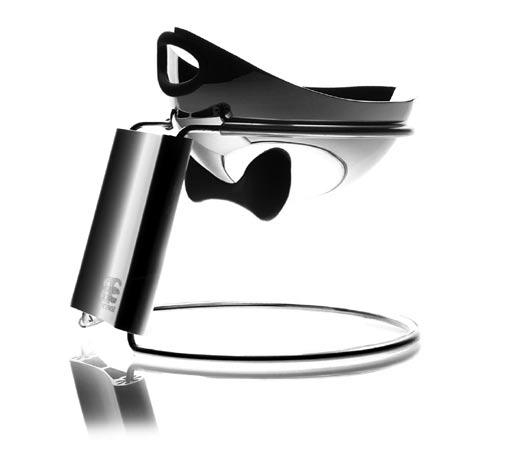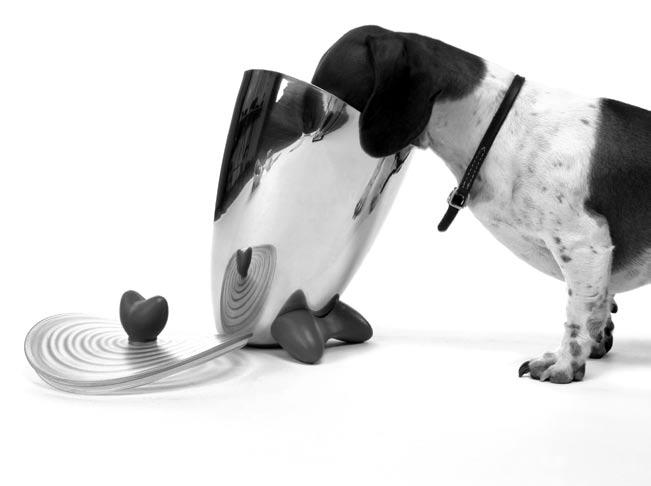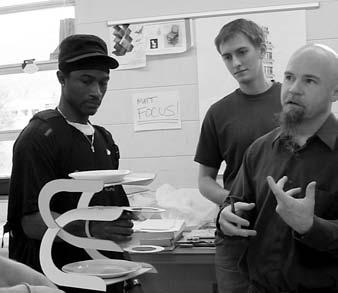
5 minute read
Design Connections Lead to Success
Design Connections L ead to Succes s
Little did Mark Kimbrough (MPD 1985) know when he was a senior at Duke University that he would have NC State connections to thank for leading him down the road to success. Kimbrough was majoring in fine art when he took the advice of Christian Holljes (MPD 1984) to come visit him at NC State in the industrial design master’s program. “Holljes had been a year ahead of me at Duke. Fortunately,” says Kimbrough, “I did take him up on his offer and I went to visit the design department at State.”
Advertisement
Kimbrough says that Holljes, who was majoring in zoology and fine arts at Duke had taken an independent study in the ID program at State his senior year. Holljes encouraged Kimbrough to do the same, so he decided to follow the same path. Kimbrough enrolled in an independent study with Vince Foote and learned to love industrial design. Kimbrough was given a project each week of the independent study. Starting out in a consulting job in the Midwest, Kimbrough heard about what Chipp Walters (MPD 1982) had been doing in the ‘Texas computer circuit’ with firms like IBM and Texas Instruments. Walters had started Design Edge and within a few months, Kimbrough became the first employee and helped get the industrial design company off the ground. Before long, Design Edge was designing products for many Fortune 500 companies.
One of their clients was Michael Dell, founder of Dell Computer (then PC’s Limited). Dell had just moved his operation to a warehouse facility and asked Design Edge to develop his first Mark Kimbrough (MPD 1985)
products inside and out. According to Kimbrough, “That put us on the map…. designing Dell’s first laptop on the market.”
Still based in Houston at the time, Kimbrough and the other Design Edge consultants would travel to Austin, commuting two and a half hours each day to make the 150-mile trip. They decided to relocate Design Edge to Austin, which was becoming a minisilicon valley area. The company continued to grow and flourish and Kimbrough became partner in 1994.
While the product development side of Design Edge was doing well, Walters was pioneering the use of multimedia and animation; well before there was much available software. Eventually, Walters spun off a new company called Human Code, and continued exploring the integration of animation, graphical user interface and gaming on the Internet. When Kimbrough became a full partner, Design Edge was strictly industrial design focused, but there was a movement in the industry to incorporate mechanical engineering into its suite of services in order to provide a more comprehensive service to its clients. Pearce Jones, a mechanical engineer, became partner with Kimbrough in the mid-90s. Today, Design Edge has 35 employees. On staff there are industrial designers, mechanical engineers, graphic designers, and experience designers (strategic branding and web site development). With this talent-stocked staff, Design Edge is able to offer comprehensive services from corporate branding to product line extensions.
After years of the tradition ‘fee for
service’ consulting business, Kimbrough and Jones began looking into other business models to generate income. In 2000 they decided to explore the notion of creating a true ‘product’ based company; one where they would design, manufacture and sell their own products. They employed their years of experience to research and select a market segment which had little exposure to design as a strategic differentiator. Six months and many pounds of coffee later, they selected the pet market to be the primary focus.
The pet industry is a $35 billion industry which has proven less susceptible to economic fluctuations. According to their research, even in a down market, people continue to spend money on their kids and pets. They then broke down the various market segments. “Other than in food products, there was absolutely no brand awareness in hard goods. There really aren’t any memorable name brands… where was Nike, Oakley or Coca Cola in this industry?” says Kimbrough. Their strategy was to develop a brand first and then to develop products that would support their brand message in the marketplace.
That venture, called WetnOz (pronounced “wet nose”), began with targeting the ‘icon’ of the industry. . .the dog bowl. . . seemingly mundane accessory, yet, one which every pet-household needs. They

Top: WetnOz booster stand and feeding dish: complies with the Vets recommendation for elevated feeding. Right: Kimbrough’s dog, Alamo, sneaking a treat from his WetnOz Treat Jar. launched with high-end, high-style food dishes and containers for both cat and dog lovers. Since their product launch in 2001, product lines have grown to now include stainless steel and plastic dishes, various accessories for the pet-home environment, toys, and soon, grooming products. WetnOz products are now carried in 400 pet and gift stores in the U.S. and 12 different countries, and have garnered international design acclaim since their introduction.
Kimbrough now splits his time between the two businesses, while Jones remains fully focused on Design Edge. WetnOz has grown at 30-40 percent in each of the past three years. So far, Kimbrough says that WetnOz has managed to exceed their every expectation with the future looking very bright. Further expansion is anticipated.
For a Duke grad who learned about the NC State program through a friend, Kimbrough says the time he spent at NC State “was an absolutely phenomenal experience for me.” The small graduate program was beneficial and he still is in contact with several people from State. “The network of students and NC State grads helped me get my first consulting job in the Midwest and another NC State connection led me to Houston as the first employee of Design Edge,” adds Kimbrough. He adds that he came a long way in what seems like a relatively short time.











